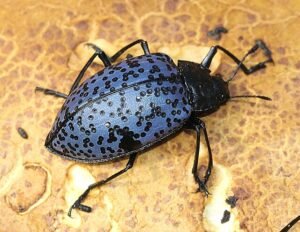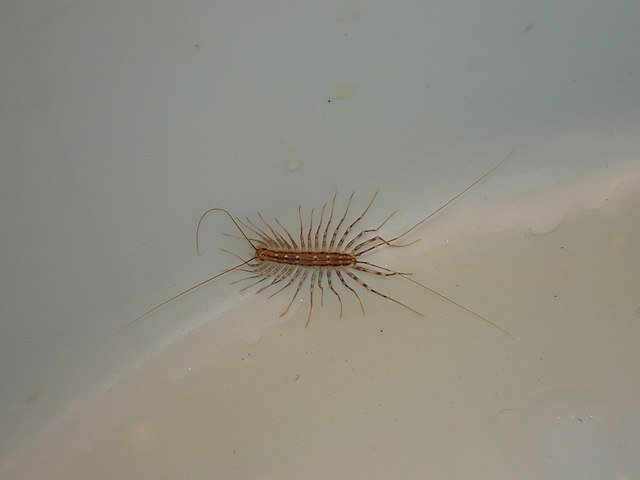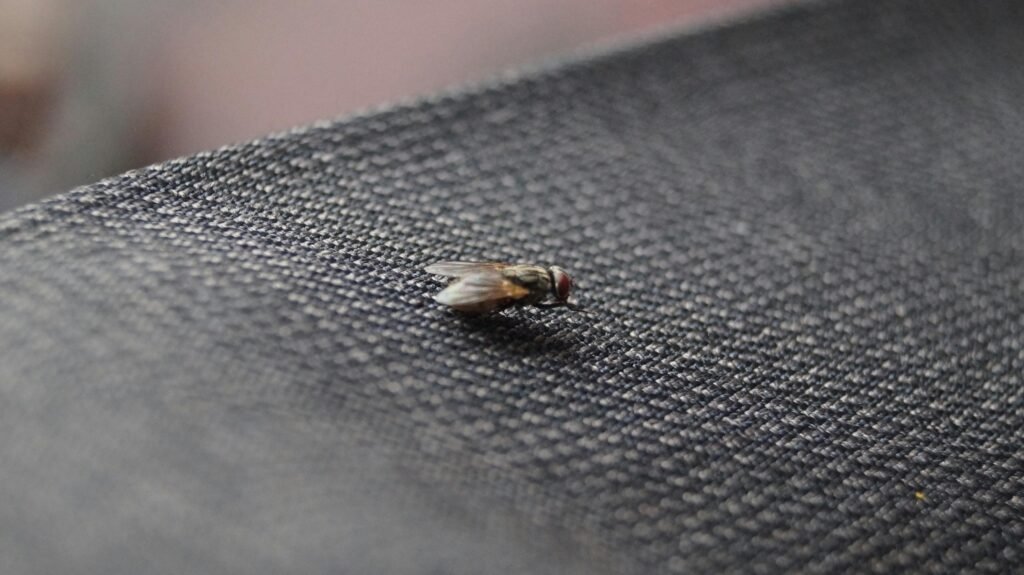Fungus Beetles (Family: Cryptophagidae, Mycetophagidae, etc.)
 Fungus beetles are small insects that often go unnoticed until they appear in large numbers around moldy walls, damp basements, or spoiled food. Unlike carpet beetles (Dermestidae) that feed on fabrics, or pantry beetles (Tribolium castaneum) that infest stored grain, fungus beetles thrive in areas rich in moisture and fungal growth.
Fungus beetles are small insects that often go unnoticed until they appear in large numbers around moldy walls, damp basements, or spoiled food. Unlike carpet beetles (Dermestidae) that feed on fabrics, or pantry beetles (Tribolium castaneum) that infest stored grain, fungus beetles thrive in areas rich in moisture and fungal growth.
As a pest control professional, I’ve inspected countless homes where owners believed they had whatever irrelevant like fruit flies or gnats or even bed bugs (!) only to discover hundreds of tiny brown beetles crawling on walls or window sills. These beetles are not dangerous, but their sudden appearance usually signals an underlying humidity or mold problem that must be corrected—not just sprayed away.
In this guide, I’ll show how to recognize fungus beetles, understand their biology, and apply the right sanitation and pest control methods to eliminate them effectively.
Identification
Scientific families: Mostly Cryptophagidae, Mycetophagidae, and Cisidae.
Common names: Fungus beetles, mold beetles, or mushroom beetles.
Size: 1.5–5 mm (very small).
Color: Brown to dark reddish-brown.
Shape: Oval, slightly flattened, often shiny.
Behavior: Slow-moving, often congregate near windows or on walls where moisture is high.
Their small size makes them easy to confuse with cigarette beetles (Lasioderma serricorne) or drugstore beetles (Stegobium paniceum), but the key difference is their association with mold, not dry food. Adults are also attracted to light, which is why you often see them near windows after they emerge from hidden moldy spots.
Field tip: If you find beetles clustered around damp wood, old bread, or wall plaster, and you also smell mustiness, you’re probably dealing with fungus beetles—not food pests.
Biology and Ecology
Fungus beetles, as the name suggests, feed primarily on fungi, mold, and mildew. Both adults and larvae depend on moist organic material where fungal spores are active.
Eggs: Laid directly in damp, moldy substrates.
Larvae: Feed on fungal mycelium, yeast, and decaying matter.
Pupae: Develop in small cavities within the same damp environment.
Adults: Emerge and fly toward light, often ending up indoors.
Their entire life cycle can complete in just 3–4 weeks under humid and warm conditions. When humidity drops below 60%, development stops—making humidity control the most effective long-term solution.
Global Distribution and Typical Habitats
Fungus beetles are cosmopolitan insects, found in most regions of the world. They’re particularly common in:
Europe: In older houses with poor insulation or damp basements.
North America: Frequently found in newly built homes where wood or drywall is still curing.
Australia & Asia: Thrive in tropical regions with constant humidity and fungal growth.
They can live in a wide range of habitats, including:
Bathrooms and basements with water leaks.
Kitchens with poor ventilation.
Moldy stored food or grain.
Air-conditioning ducts or insulation containing trapped moisture.
Outdoors, you’ll find them in decaying logs, compost piles, and under bark—anywhere mold grows freely.
Risks and Damage
While fungus beetles don’t bite or sting, they can become a persistent nuisance. Their presence usually indicates excess humidity or hidden mold, which can also lead to health issues for people with allergies or asthma.
Potential concerns include:
Contamination: They may crawl over stored food or utensils.
Allergies: The fungal spores they spread can worsen respiratory irritation.
Structural alerts: Infestations often signal hidden leaks or poor ventilation that can damage wood and drywall over time.
In food-processing facilities, warehouses, or bakeries, fungus beetles can be considered a secondary pest, contaminating packaging and stored goods after mold appears.
Signs of Infestation
Small brown beetles flying near windows or lights.
Tiny insects crawling on bathroom tiles or damp walls.
Presence of visible mold or mildew where beetles gather.
Musty smell in affected areas.
Beetles emerging after heavy rain or plumbing leaks.
Pro tip: Tap baseboards or remove a section of drywall where mold is suspected—beetles often scatter from behind.
Control Methods
Step 1: Moisture and Mold Control
Fungus beetles cannot survive without moisture. Eliminate humidity first:
Fix leaks under sinks, behind walls, or around windows.
Increase ventilation in basements and bathrooms.
Use dehumidifiers to keep relative humidity below 50%.
Clean and dry water-damaged materials within 24 hours.
Step 2: Mold Removal
Scrub moldy areas with detergent and water.
Apply a fungicidal cleaner (not just bleach).
Dispose of moldy food, cardboard, or fabric immediately.
Remove and replace mold-infested drywall or wood if necessary.
Step 3: Vacuuming and Cleaning
Vacuum window sills, baseboards, and floor edges to remove beetles and eggs.
Pay special attention to corners and cracks.
Empty vacuum bags immediately after use.
Step 4: Targeted Insecticide Use
Use residual insecticides only as a supporting measure after moisture is corrected.
Apply a light residual spray (pyrethroid-based) on walls, baseboards, or behind appliances.
Avoid foggers—they don’t reach the breeding source.
In food areas, always follow label restrictions.
Step 5: Preventive Sanitation
Keep stored grains and cereals dry.
Clean kitchen cupboards monthly.
Store food in airtight containers.
Inspect indoor plants for mold on soil surfaces.
Advanced Approaches (Professional Level)
When infestations persist despite cleaning, professionals can take more advanced steps:
Moisture Mapping: Using infrared cameras and hygrometers to locate hidden leaks or condensation zones.
HEPA Filtration and Mold Remediation: Removing contaminated insulation or drywall under containment.
Residual Dusts: Applying insecticidal dusts (e.g., silica or boric acid) into voids and wall cracks.
Fumigation (Rare): Only for severe infestations in warehouses or museums.
Integrated Pest Management (IPM): Combining humidity control, sanitation, exclusion, and targeted pesticide use for long-term prevention.
Professional pest controllers often collaborate with building inspectors or HVAC specialists, since solving fungus beetle problems is as much about construction and airflow as it is about insects.
Cultural and Historical Context
Fungus beetles rarely appear in old literature because they were not considered destructive to property like termites or powderpost beetles. However, museum conservators and archivists have long recognized them as warning signs of damp storage conditions.
In the modern era, with energy-efficient but poorly ventilated homes, fungus beetles have become more common. They often appear a few months after new construction, when trapped moisture in walls encourages mold growth—an environment perfect for these beetles.
FAQs About Fungus Beetles
Q1: Are fungus beetles harmful to humans?
A: No, they don’t bite or transmit diseases, but their presence indicates a mold problem that could affect your health indirectly.
Q2: How do I know if they’re fungus beetles or pantry beetles?
A: Fungus beetles prefer damp, moldy materials, while pantry beetles target dry stored foods like flour or pasta.
Q3: Can I just spray insecticide to get rid of them?
A: No. If humidity remains high, they’ll come back. Fix the moisture source first; insecticide alone won’t solve it.
Q4: Will dehumidifiers really help?
A: Yes. Maintaining low humidity (below 50%) can completely stop their breeding cycle.
Q5: Are they common in new houses?
A: Yes, especially during the first year after construction when materials still hold moisture.
Q6: Can fungus beetles live in air ducts?
A: Yes. They can breed in condensation inside HVAC systems or in damp insulation—another reason to clean and inspect regularly.
Final Thoughts
As someone who has treated countless infestations in homes and commercial spaces, I can tell you that fungus beetles (Cryptophagidae, Mycetophagidae, and others) are never the real enemy — they’re the symptom of a bigger issue: excess moisture and hidden mold. Spraying chemicals without fixing humidity is like putting a bandage on a leaking pipe — it might look better for a few days, but the problem will return.
If you’re seeing small brown beetles around your windows or damp walls, focus first on drying and cleaning. Once moisture is under control, populations drop naturally. For more serious cases — especially in basements, warehouses, or restaurants — a professional pest control inspection is essential. They’ll locate the source and apply residual treatments safely where needed.
I always remind my clients: a dry home is a pest-free home. Keep air moving, fix leaks early, and check behind furniture in humid areas. With good hygiene and proper ventilation, fungus beetles rarely return.
Disclaimer
This article is for informational purposes only. Pest control laws and approved chemicals vary by country. For best results and legal safety, we strongly recommend contacting a licensed pest control professional in your local area. Always make sure that the pest control technician is properly certified or licensed, depending on your country’s regulations. It’s important to confirm that they only use approved products and apply them exactly as instructed on the product label. In most places in Europe, UK, or USA, following label directions is not just best practice—it’s the law.
Author
Nasos Iliopoulos
BSc Agronomist & Certified Pest Control Expert
Scientific Director – Advance Services (Athens, Greece)
Licensed Pest Control Business – Ministry of Rural Development & Food (GR)
References
Wikipedia - Erotylidae
Penn University - Hairy Fungus Beetles


